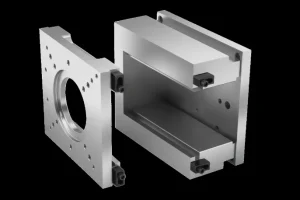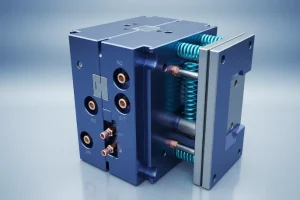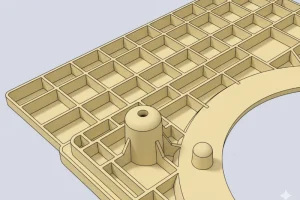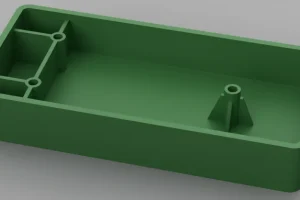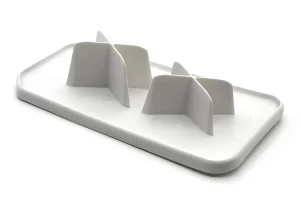When it comes to making plastic stuff, you gotta be fast and accurate. Injection molding is a big deal in the world of plastic product manufacturing, especially in industries like cars, planes, and stuff you buy at the store. It’s the way we make a lot of stuff all at once, like car parts and things you use every day. But people who don’t know about it always ask: How long does it take to make an injection mold?
Injection molds usually take anywhere from 3 to 8 weeks to make. The time it takes depends on things like how big the mold is, how complicated it is, and how it’s made. Let’s dive into the world of injection molds and see what makes them take so long to make.

I. Injection Mold Manufacturing Process and Time Required
1. Mold Design Stage
The production cycle of injection molds starts with the mold design time. The design stage includes things like mold design drawings, 3D models, mold structure and material selection, injection molding processes, etc., to ensure the quality and efficiency of mold production.
The design stage usually takes 2 to 5 days, depending on factors like the complexity of the mold and the designer’s experience level.

2. Workshop Production Stage
Workshop production is the core stage of injection mold manufacturing, accounting for the largest proportion of the entire manufacturing cycle. During the workshop production stage, various processes such as turning, milling, milling machine processing, electrical discharge machining (EDM), wire cutting, etc., are required. Heat treatment is also necessary, along with quality inspection to ensure mold quality.
The time it takes to produce a mold in the workshop is usually between 2 and 4 weeks. This depends on the size of the mold, how complicated it is, what kind of processing technology is being used, and how many molds the workshop can produce at once.

3. Sample Debugging Stage
Debugging is a very important stage for testing the quality of the mold, making adjustments and corrections. During the production of injection molds, there may be problems such as stuck pins, material running, high defect rates, etc. due to differences in raw materials, mold size variations, and injection molding process differences.
Typically, debugging time can range from 1 to 2 weeks, depending on factors such as the complexity of the mold and the technical experience of the debugging personnel.

4. Delivery Time
The delivery time of injection molds depends on various factors such as when you place the order, how long it takes to make the mold, how long it takes to inspect the mold, and how long it takes to make the sample. The whole process usually takes about 3 to 8 weeks, but sometimes it takes longer.
The production time of injection molds is influenced by factors such as design, processing, debugging, etc. Typically, the production cycle of injection molds is around 2 to 4 weeks. The design and debugging stages each take about 1 week, while the processing stage depends on the size and structure of the mold.

If you want to shorten the production cycle of injection molds, you can try the following methods:
(1) Using rapid prototyping: Now, with the maturity of rapid prototyping, using it to make injection molds is a popular thing. It can greatly shorten the production time and ensure the accuracy and quality of the molds.
(2) Simplify the mold structure: Simplifying and optimizing the mold structure can reduce production time and cost. Experienced technicians are needed to design the structure and improve processing technology.
(3) Choosing the right materials: Picking materials that are versatile and easy to work with can make the mold-making process easier, which means you can make molds faster.

(4) Rational production scheduling: When you take orders, you need to estimate the processing cycle to arrange production plans and improve production efficiency.
(5) Boosting processing efficiency: Utilizing cutting-edge automated processing equipment like CNC machines can help you get more done in less time.
(6) Addressing issues promptly: If problems come up during the production process, you need to take care of them right away so you don’t slow down the production cycle.
(7) Reasonable debugging time arrangement: Debugging is a crucial step to guarantee the quality of the mold, but it also needs to be scheduled reasonably to avoid delaying the production cycle.

II. Factors Affecting the Manufacturing Cycle of Injection Molds
Injection molds are super important for making plastic stuff, so how long it takes to make them is a big deal for how fast and good we can make plastic stuff. There are a bunch of things that affect how long it takes to make an injection mold, and we’re going to talk about them now.
1. Product Structure
Product structure refers to the complexity of the structure of the plastic part samples provided by the customer. Generally speaking, the more complex the shape of the plastic part, the more difficult it is to make the mold. Technically speaking, the more parting surfaces, assembly positions, snap positions, hole positions, rib positions, etc., the more difficult it is to process. Generally speaking, the more complex the mold structure, the lower the quality, the more difficult it is to process, the more problems there will be, and the slower the final product will be.

2. Product Size
The bigger the size, the longer the cycle for plastic mold processing. Correspondingly, the processing time for small parts will be shorter.
3. Product Requirements
Different customers have different requirements for products, such as whether the designed surface is textured, polished, or mirrored, which affects the production cycle of plastic molds.

4. Material Performance of the Product
If the product has special requirements, the requirements for mold steel and processing technology will also differ. For example, molds with PC plus ceramics, the purpose of adding ceramics is insulation and fire prevention, commonly used in LED lighting. The requirements for the mold are different. The mold needs to be hardened, and after hardening, precision grinding and secondary CNC processing will be more difficult. Subsequent processing stages will also be more challenging, naturally taking more time. There are also some molds that require corrosion resistance or soft rubber molds, which will have different requirements, and the manufacturing and processing technology will be more complicated.

5. Complexity of the Mold
The complexity of injection molds is one of the most important factors affecting the manufacturing cycle. Simple injection molds usually take only a few weeks to complete, while complex injection molds may take several months or even more than a year. Complex injection molds include components with special shapes, structures with multiple functions, and parts with high precision requirements.
6. Size and Weight of the Mold
The size and weight of injection molds also affect the manufacturing cycle. Big molds need more materials and take longer to process, so they take longer to make.

7. Number of Cavities in the Mold
The number of cavities in the mold, that is, the number of cavities in a set of molds that produce several products, depends on whether the customer product market is large or not. There will be differences in processing time between producing two products and one product with one set of molds. Normally, when a new product is not fully developed in the market and the market demand for the product is not large, the number of cavities in the injection mold does not need to be that many, and it can ensure market supply, with relatively high cost performance. Of course, after the market for the product matures, the number of cavities in the mold will definitely increase. This depends on the demand of the market to determine whether there will be changes in the number of cavities, to feedback the demand of the market.
8. Material and Manufacturing Process
The material and manufacturing process of injection molds also affect their manufacturing cycle. For example, using more advanced manufacturing processes and materials can improve manufacturing efficiency while also improving the quality and lifespan of the mold.

9. Design and Testing
Before you can make something with an injection mold, you have to design and test the mold. Designing and testing molds takes a lot of time and effort, especially if the molds are complex. And if you find problems during testing, you might have to redesign and retest, which takes even more time.
10.Busy Production in the Factory
The manufacturing cycle of injection molds is also affected by how busy the factory is. If the factory is making a lot of stuff, it might take longer to make your mold because they don’t have enough people or resources.

Considering the above factors, the manufacturing cycle of injection molds usually ranges from several weeks to several months. The length of the manufacturing cycle depends on multiple factors such as the complexity, size, and weight of the injection mold, material and manufacturing process, design and testing, and the degree of busy production in the factory. To ensure the accuracy of production plans and maximize production efficiency, plans for the manufacturing of injection molds should be made in advance and strictly implemented.
III. Case Study
To give you some context, let’s look at a few real-world examples of how injection mold production schedules can change:
1. Simple Molds for Consumer Goods
Let’s say you’re a manufacturer and you need a basic injection mold to make something simple like plastic container lids. In this case, with a simple design and materials that are easy to get, it might take several weeks to several months to make the mold, depending on how busy the mold maker is.

2. Complex Molds for Automotive Components
Now, let’s talk about making really complicated molds for making car parts that have to be just right. These molds can take months to make because they’re so complicated. You have to make a bunch of different versions of the mold and test them to make sure they work right.

IV. Conclusion
So, to sum it up, how long it takes to process injection molds is not something you can just generalize. You have to consider a lot of factors, like how hard it is to make the product, what the customer wants, what the product is made of, and how many of the molds you’re making, like how many cavities you’re making, stuff like that. The processing and manufacturing cycle of injection molds is calculated through rigorous scientific methods. You can’t just tell the customer a number off the top of your head. It also depends on things like how complicated the product design is, how big it is, how precise it has to be, how many you’re making, and how it has to perform.

While some molds can be made quickly, others take a lot of time and skill to make sure they work right and make good parts. By understanding these things and working closely with experienced mold makers, you can do a better job of dealing with the complexity of injection molding. This will help you get your product to market faster and make it more competitive.
It should be noted that different manufacturers may have different production cycles. Some big mold manufacturers may complete the production of injection molds in a shorter time, while small manufacturers may take longer.


